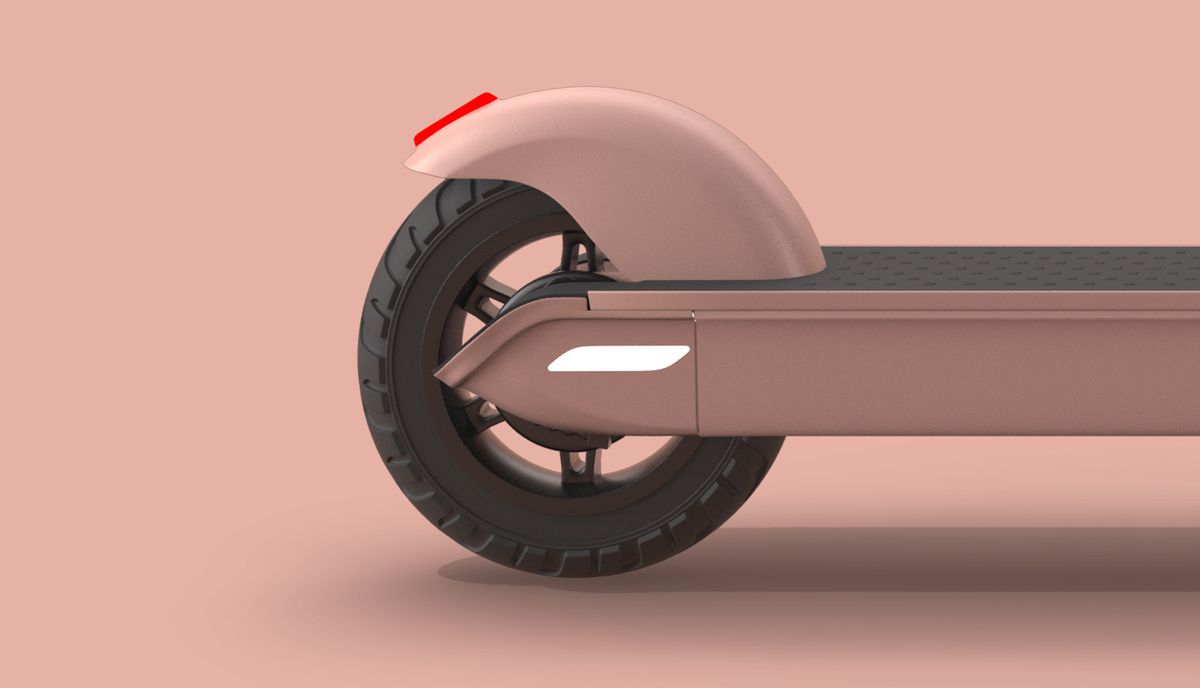Bird unveiled its next-generation electric scooter on Wednesday that it says will be more durable, powerful, and longer-lasting than previous versions. Dubbed Bird One, this custom e-scooter will also have a longer lifespan than past scooters — a key indicator if Bird ever hopes to become a profitable company. In a new twist, Bird will be selling it to anyone who’s tired of ride-sharing and is ready to enter the new world of scooter ownership.
Bird One will be hitting the streets about seven months after the company unveiled its first custom-built scooter for dockless ride-sharing, Bird Zero. When Bird launched in Santa Monica, California, in 2017, its fleet was comprised mostly of consumer scooters made by Xiaomi and Segway-Ninebot, which were never intended for heavy fleet use and depreciated quickly. Bird lost money on each trip, but it managed to scale up after raising millions of dollars in venture capital funding.
Bird Zero was intended to be a more rugged scooter that could take a beating and keep rolling for an average of 10 months, says Bird CEO Travis VanderZanden. With Bird One, VanderZanden predicts its latest scooter will stay in circulation for at least 12 months. The company plans to phase out all of its consumer-grade scooters over the summer; Bird says it will continue to use its Xiaomi M365 models for monthly personal rentals, and it will no longer purchase the Ninebot ES scooters.
:no_upscale()/cdn.vox-cdn.com/uploads/chorus_asset/file/16220344/BirdOne_Wheel.jpg)
:no_upscale()/cdn.vox-cdn.com/uploads/chorus_asset/file/16220345/BirdOne_Head.jpg)
Scooter companies have been struggling to turn a profit since bursting onto the scene almost two years ago. It all comes down to unit economics — how much revenue each individual scooter brings in for the company — and the most important number to consider is the lifespan of each scooter. The more trips and miles a single scooter can cover, the better it is for scooter companies that have to recoup the cost of each vehicle before they can start making money.
“The economics for scooters with Bird Zero are already working,” VanderZanden told The Verge. “But the exciting thing is, for every vehicle we roll out, we think the economics keep getting better and better. And importantly, because of economies of scale, the cost of the scooter goes down as well. So Bird One actually cost $50 less than Bird Zero, even though it’s a superior vehicle.”
Bird manufactured its Bird Zero scooters in cooperation with Okai, a Chinese scooter company. But VanderZanden wouldn’t say who they partnering with on the production of Bird One, citing an NDA. “I will say is we now use multiple manufacturers for vehicles,” he noted.
Bird is feeling so bullish about its new scooter that it plans to start selling them for personal use. It’s available in three colors: “jet black,” “dove white,” and “electric rose.” Preorders open today, at the not-inexpensive price of $1,299. Xiaomi’s Mi scooter sells for $448 on Amazon, while Swagtron retails for around $299. (“We think it’s a very attractive price,” VanderZanden said.)
Bird says its Bird One scooters will have a 473Wh battery, which VanderZanden says is twice the battery power as other e-scooters. That gives each scooter a range of up to 30 miles on a single charge. Other upgrades include GPS-enabled anti-theft device, 9-inch semi-solid pneumatic tires, and a digital lock that can be locked and unlocked from Bird’s smartphone app.
The scooter tops out at 19 mph, and it can carry a max weight of 220 pounds. There is no lock-to mechanism, though, which some experts have said could help reduce vandalism and prevent scooters from blocking the sidewalks.
If your scooter breaks down, VanderZanden said you can bring it (or mail it) to one of Bird’s service centers, located in North America and Europe. If the scooter is stolen, Bird’s “bird hunter” network of freelancers may be able to track it down and find it. These are independent contractors who hunt down missing Bird scooters for the company, either to charge or bring in for repairs. The company “can’t make any promises” about their ability to find your stolen or lost scooter, VanderZanden added.
After the winter lull, scooter companies are getting excited about the summer when they plan on rolling out new products and kicking their ride-sharing service into full gear. Bird is trying to get a leg up on the competition with a new scooter and new business models. It’s how it plans on staying at the head of the pack.
“Our goal is really to not just do sharing, but to do sharing, rent, and own,” said VanderZanden. “Really go after micro mobility generally, [and] to try to help people get out of cars and onto short-range electric vehicles like Bird One.”
